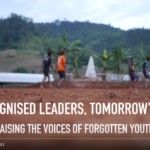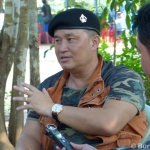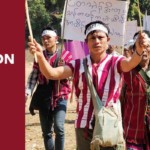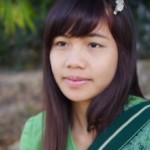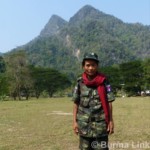Burma Link | March 26, 2018
Daw Nan is a 60-year-old Karen woman who has led a remarkable life. Daw Nan spent much of her childhood in jungle hideouts, unable to go to school or learn how to read or write. When Daw Nan turned 18, she joined the KNLA (Karen National Liberation Army), and subsequently married a fellow soldier and fell pregnant. Only weeks later, however, her husband was shot and killed by the Burma Army right in front of her eyes. Exacerbating her deep loss, Daw Nan’s husband’s head cut off and put on display on a village post. Unabated, Daw Nan continued to fight against the Burma Army in the frontlines whilst also taking care of her child. For over a decade, she fought as part of a well-known KNLA women’s battalion led by Commander Marry Oo, and also played a central part in one of the most famous missions entrusted to KNLA soldiers – to travel deep inside Burma and save French civilians who had been arrested by the Burma Army. The dangerous mission also earned Daw Nan a medal from General Bo Mya, a renowned Karen leader who served as the KNU (Karen National Union) Chairman from 1976 to 2000. Since then, Daw Nan has met her second husband and started a family and life as a civilian. After her husband was arrested by the Burma Army, Daw Nan once again faced life as a single mother. Years and many new beginnings later, the family lives in a Karen village where Daw Nan’s husband is the village chief. Daw Nan’s story is part of a longitudinal interviewing project conducted by Burma Link (see below for more information about the project). Stay in tune for updates.
Part 1: Background
Summary of life displaced: “We had to move our place over and over”
When I was living in Burma it was terrible and we ran from place to place. We stayed in Tee Mor Ko village for around ten years. Then I moved into Soe Soe‘s
We couldn’t find Soe Soe or the others because they went back to their village. But we tried to gather our villagers after a while, and then we could build our new small village [Ha Hto Ko across the river from Mu Aye Pu], working together. For a while we had to move our place over and over until where we are living now. We have lived here [in Thailand] around 10 years.
When I was staying at Tee Mor Ko village I was 42 years old. Our village where we are living now is called Mu Aye Pu river side, Ha Hto Ko village. The Thais call it Par K’ Tee.
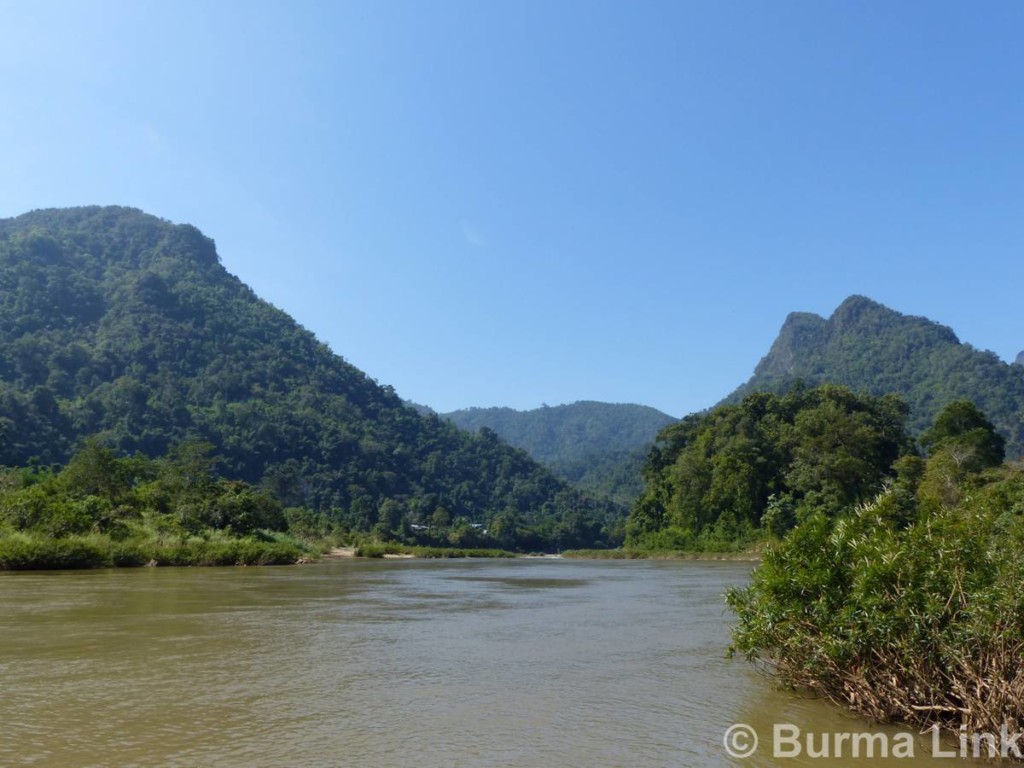
View from near Ha Hto Ko village with Mu Aye Pu across the river.
We didn’t move here directly. We were separated in different places like some were in Baw Naw Kloe and some were in Mae Tha Wor. We just gathered the people together and built our village when the DKBA went back to their place [they left Mu Aye Pu]. We came back here around 2012 or 2013. Before we live here, we moved to Mae Tha Wor, because I had some friends to take care of us. When we moved to live close to Mae Tha Wor the Thai people didn’t want us to live there so we had to come back here. We stayed there just for 3 or 4 months and then we moved to Baw Nor Kloe for a year and then we came to live here [Ha Hto Ko].
[/fusion_separator]Childhood living and working on the run: “We just fled saving only ourselves”
Before I lived in Tee Mor Ko village I lived in Nor K’Ton village which located in [KNU] Brigade 1, Bilin Township.
Daw Nan says that the livelihood made with farming was enough for the family, but security was an ongoing concern.
We were under the control of the Burmese government. At that time, we needed to hide ourselves and save ourselves. Sometimes we had to send food for the Kaw Thoo Lei [KNU] soldiers secretly. It was very hard, we had to be afraid of the Burma Army.
Daw Nan and her siblings, older brother and sister, were unable to go to school.
I don’t understand anything about education. I don’t know how to read, because I never learnt. I just worked in the field and lived in the forest and I also didn’t have friends in my childhood.
I wanted to go [to school] but my parents didn’t send me. [I told them] very often but my parents told me that one proverb: Educated people eat rice and the uneducated people also eat rice.
Daw Nan’s father was the village chief and the family had to live in the forest to hide away from the Burma Army. She was 12 or 13 years old when her family moved to the forest.
Only my family lived in the forest because my father was the village leader at that time and some people let the SPDC [State Peace and Development Council – as the military regime was known from 1997 to 2011, but still regularly referred to as such especially by refugees and ethnic soldiers] know about that so we did not dare to live in the village anymore. We went back to our village after the troops changed [it became a KNU control area]. [We stayed in the forest] because the SPDC, they thought that my father was a Karen commander so they wanted to kill him, and because of the conflict situation.
We lived in a house like a hut and hid in the forest and we worked in a farm. Unfortunately, one time the Burmese troops came into the field and burned all our paddies and plants, and we just fled saving only ourselves. After they burned our hut and field, they went back and took [stole] everything from our place.
Daw Nan said they only burned her family’s farm.
No [not others], just my family’s [farm] because the others lived in the village.
The Burmese troops lived around the Nor K’Toe village and one day people said the Burmese troops would attack [us] in the forest. And I thought that someone would show them the way to our hut. That evening they arrived and we just only escaped saving ourselves without [bringing] anything.
We then built our new house [hut] and cut a new farm in a new place.
After about four years of living in the forest, the KNU gained control over their village and the family was able to move back to their village.
The KNU controlled the village when we went back.
[/fusion_separator]Life as a soldier in Manerplaw and the front lines: “I organized around 100 – 200 women soldiers”
Daw Nan became a soldier when she was 18 years old. She was based in Manerplaw, the KNU and the pro-democracy movement headquarters, and was sent to the frontlines every week.
My older brother was arrested by the SPDC and they kept him in prison because he was also a Karen general. In each house, one of our family members needed to be a soldier during that time. I joined the Karen army when I was 18. Bo Myi Thien [Karen General] took me to his troops to be a soldier.
I also wanted to do it because the leader called me to be a soldier and then I did not dare to go back anymore, and moreover, my parents were arrested by the military troops. I felt excited because I also wanted to be a soldier.
I experienced fighting very often during that time. Usually, we fought with the SPDC twice or three times per week at that time. Sometimes, it was heavy fighting. And sometimes it happened every single day.
Daw Nan wanted to visit her village, but due to the security risks, was unable.
Yes [I wanted to go], but my mother messaged me that ‘you must not came back in the village, if you come back the Burmese soldiers will kill you, because they asked us about you and they said that you were you a soldier’ and my parents told them that they didn’t know anything but just said that ‘our Karen leader called her there. If you want to kill her and if you see her you can kill her.’
[In Manerplaw] I met with Marry Oo. She was a [Karen] soldier and she was a general. She could speak English very well. At the time she asked me to gather Karen women soldiers, so I organized around 100 – 200 women soldiers. But some of them didn’t want to do it, so I let some of them to go freely. We still had around 100 women soldiers.
[/fusion_separator]Saving foreigners arrested by Burma Army: “I got a medal from Pu [General] Bo Mya”
When she [Marry Oo] was still alive many people interviewed me about saving the foreigners. Burmese soldiers had arrested some foreigners and made them build a cement factory in Myent K’Lin inside Burma. Then we tried to save them by fighting [Burmese soldiers].
There were three foreigners. One of them was killed when we went and arrested him because he threw his knife at us and we were worried that he would kill us, so we shot him and he died. If he didn’t throw the knife at us we wouldn’t have killed him.
When we tried to save them, General Bo Myiet Thien, I and others managed the troops — around 200 soldiers. There were four friends who went together with me to get the foreigners. And there were many soldiers who were guards at that time. Some were with those two foreigners and some guarded the way.
We had to carry them [foreigners] back, because they walked back very slow and it was a terrible time, because the Burmese troops followed us, so we carried them and tried to get back quickly. We slept three days on the way. We came back through Ker Ma Moe, Yaw Law Plo, and also crossing the Salween River. We dared not walk on the road. We had to come back through the jungle. When We arrived back at Nah Poe Hta and started crossing the Salween river, the Burmese military jet followed us and tried to shoot us down. Then, we all ran away quickly.
All Karen soldiers made it back, Daw Nan says.
After that our leader sent them [foreigners] directly to Manerplaw. Both foreigners were sent to Manerplaw to meet General Bo Mya. I don’t know what happened to them after they arrived there because I did not follow them anymore; I returned to Brigade No. (1) on my duty.
At that time, I got a medal from Pu [General] Bo Mya. We all got one for each. I was happy at that time because I was told that we would get freedom soon.
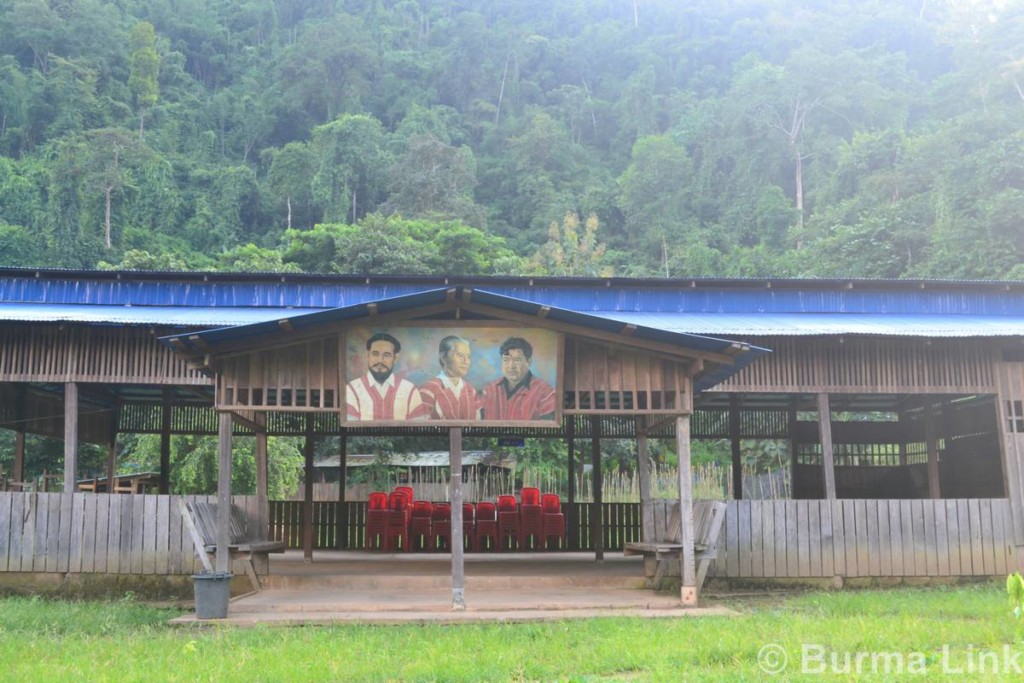
Three renowned Karen leaders – Saw Bo U Gyi, Mahn Ba Zan and General Bo Mya – in a painting hung outside the meeting hall in Mu Aye Pu.
The first husband: “Burma Army cut his head off and brought it to the village”
I have had two husbands. My first husband was killed by the Burmese military. We met when we joined the Karen army. I was 26 years old at that time.
On that day, the Burmese military came and attacked us when we were in farm. We both had guns. As soon as we saw the Burmese military we ran away, and they were shooting at us. One bullet hit my husband’s calf and then, he jumped down into irrigation. Before he was killed, he shot dead 8 Burmese military soldiers. Later on, the Burmese military could kill him because he ran out of bullets. Burma Army cut his head off and brought it to the village and hung it from a post in the village. His eyes were taken out. His body was left in the irrigation.
He died the same month and year when we got married. Fortunately, I was pregnant even though we stayed together only for a few weeks. I could do nothing. I just stayed as single parent. Luckily, some of my leaders looked after me at that time.
[/fusion_separator]The second husband: “SPDC came to arrest him”
After being a soldier and central part of Marry Oo’s famous women battalion for over a decade, Daw Nan met her second husband and moved back to her home village and made a living as a farmer. Although they were living as civilians and the village was under KNU control, the situation was volatile. After nine years of living in the village, her husband was caught and arrested by the SPDC.
When I got married [in 1988], I was maybe around 34, I am not sure. I met him in Manerplaw. At that time he was with the [KNU] government. [He was] collecting money and buying food for the soldiers.
After I married my husband I went back to Nor K’ Toe. [In Nor K’Ton] I was a farmer and I went to work in a farm. At that time the SPDC caught my husband with a gun. My husband was in prison for 3 years in Thaton [Mon State]. My husband wasn’t a soldier but the situation was not good, so even the villagers had to carry guns to protect themselves and their people.
Telling the truth, at that time I was the soldier, but I had fallen in love with my husband, so I lived in the village and cut the farm in the jungle. During that time one of the KNU officers gave the gun to my husband to shoot the wild animals to cook a curry. Then some people told the SPDC about my husband and the SPDC came to arrest him and beat him and he nearly died. And later I heard that he had died. I had only my 3 children and one of my children was very young.
I couldn’t feed my children anymore. After a while, one of the old women from Tee Mor Ko asked me to live with her and she looked after my children. I worked in the field and my older son was hired to look after some buffalos.
Daw Nan said that when her husband was arrested, they were able to have contact and she could visit him.
Then after my husband was released from prison he came directly there [to Tee Mor Ko] and we lived together there. When he was in prison I was so depressed more than I could even say, and after he was released I felt very excited. I couldn’t do anything because I had three little children at that time.
My children cried a lot when they saw him. He was nearly dead when he was released.
Daw Nan’s husband said that when he was in prison, it was very small place and he didn’t have enough food. “When I was released I was very happy to see my family again,” he added.
[/fusion_separator]Moving to Mu Aye Pu for the first time: “I stood for the Karen nation by being a soldier for a long time”
We heard that some people would set up a place for refugees [IDPs] at Mu Aye Pu so my mother asked me to stay there and she said, ‘if Pu [General] Bo Mya knows you he will take care of you.’ I went there and he really remembered me. They took care of me and gave me food. They looked after over 20 families.
At that time the village was poorer than now because it was a new place and there were 2 or 3 wooden buildings and like 2 or 3 offices. we had to build our house by ourselves. I was doing the cash crop of sesame [for livelihood].
At that time, our Pu Bo Mya told his children to take care me and my family if I passed away because I stood for the Karen nation by being a soldier for a long time.
Daw Nan and her family stayed in the new village of Mu Aye Pu for about five years until the village was attacked by the DKBA (Democratic Karen Buddhist Army), which had split from the KNU in 1994 and sided with the Burma Army.
When they came to attack our place, our Karen [KNU] troops wanted to fight them but the leader didn’t order to fight them, so we moved little by little to other places [in Thailand] until we reached Baw Nor Kloe.
We all ran but we ran separately and I moved only with my family. By surprise, later I met with some leaders like Bo Toe win and I asked, ‘why didn’t you protect us? Didn’t you have pity or didn’t you care?’ Then he told me that ‘I didn’t know where you went, where you ran, so I couldn’t protect you.’
Daw Nan says that when they ran they were able to bring materials such as pots, plates, spoons and food with them. They traveled on foot, first from Mu Aye Pu across the river and to the small Thai border town Mae Tha Wor. It was the rainy season and the family slept under a rain cover for 3-4 months under very difficult conditions. No one helped them except two foreigners, Lilian and Jane (names have been changed).
We just moved around by ourselves. Since we moved away no one arranged or took care of us except some foreigners looked after us and our Thramu [Karen word for teacher, also used as a sign of respect] Lilian helped us, like she gave us some food. And when we moved to Baw Nor Kloe she only gave food and helped only the students. She doesn’t help us villagers anymore.
Lilian and Jane helped us [in Mae Tha Wor]. They gave us food like rice, oil, Mama [noodles], canned fish, mosquito nets and blankets. They stopped supporting us when we moved here.
We slept under the rain cover. It was the rainy season. It was so difficult during that time.
Daw Nan never considered moving to a refugee camp.
I didn’t want to go. Currently, they are not allowing to go outside and go into the camp. It’s not easy.
[/fusion_separator]Negotiating with the DKBA and rebuilding the village: “I wasn’t afraid of anything, […] I just persuaded and scared them”
After living in Baw Nor Kloe for about one year, Daw Nan and her husband decided to find all the Mu Aye Pu villagers who had been scattered around Thai border villagers following DKBA’s attack. Daw Nan’s husband had been the village chief in Mu Aye Pu, and the couple wanted to recreate the displaced and dispersed village. First, Daw Nan volunteered to go to Mu Aye Pu and meet with the DKBA who still used the place as their army base.
We went and gathered people to live here. At that time, no one dared to meet with the DKBA, but I dared to meet them, so I went to the DKBA. When I went to meet them I was still living in Baw Nor Kloe. The [KNU] leader asked me to build relations with them so that they would be on our side. And when I told them [DKBA] about that they said that ‘of course we are brothers and sisters and we can understand each other.’ Then I told them that ‘you have to move your place to another place because our KNU will come back and stay here.’ And later they moved their place.
I wasn’t afraid of anything. Because I knew them when they were children. At that time I just persuaded and scared them like ‘why did you join the DKBA? That’s not good. You mixed yourself with some Karen and some Burmese and if you stay with them for a long time the KNU will fight you, so come back and join us again.’ After that, two of them escaped and joined us [KNU].
After they [DKBA] moved their place to another place, we came to live here [in Ha Hto Ko]. We built our houses and set up our village and then later the KNU came here [to Mu Aye Pu]. We collected villagers to set up our village and we thought that if we have set up the village, our leader would take care us. But we feed ourselves, we couldn’t do anything else.
Daw Nan says that she and her husband were able to find all the villagers and they all came to live in Ha Hto Ko. Since the village came together again, none of the families have moved to another place. There are 38 families in the village, all of them having lived together in Mu Aye Pu before fleeing the DKBA attack to Thailand. Originally they are all from different places from inside Burma, such as Htee Mor Ku, Mae K’taw Kee ,Klaw k’Tey, Baw Jur Ler, and others, Daw Nan says.
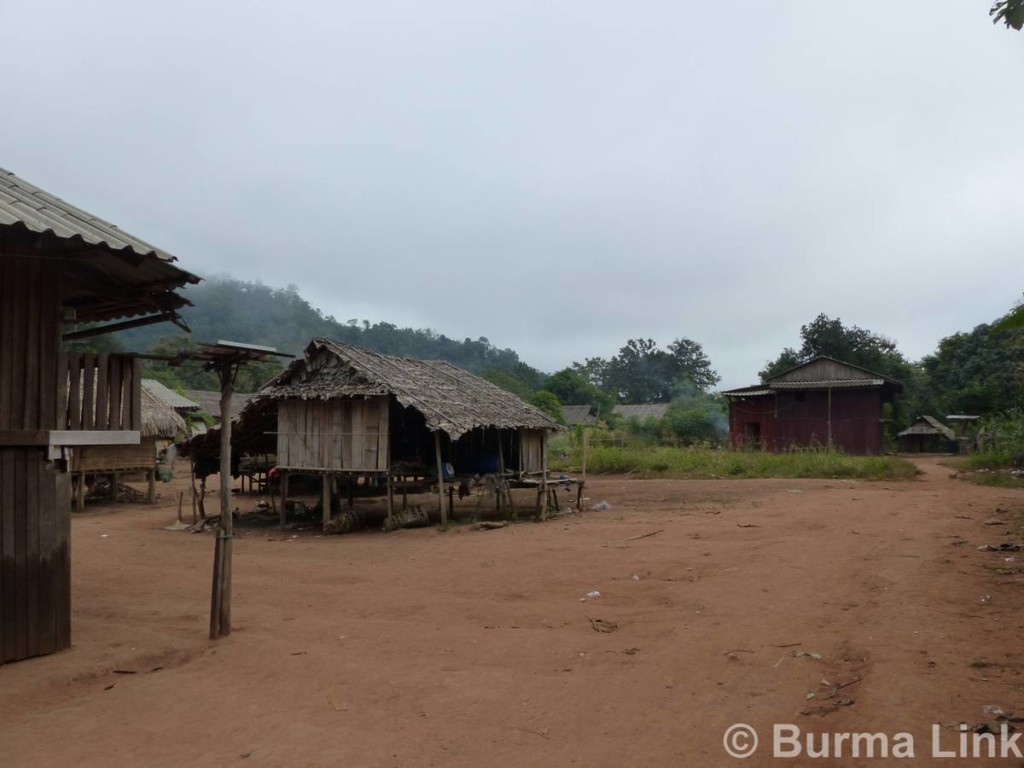
Most of the houses in Ha Hto Ko village are made of bamboo.
Part 2: Life in December 2016
Family and livelihood: “We borrow some rice from our friends”
I have five children, the oldest one is over 30 years old, the second one is around 28, the third one is over 20, the fourth one [15 years old] is studying in Mae Tha Wor and the youngest one [12 years old] is still young. I have two daughters and three sons.
[My youngest daughter] does not go to any school. She is not clever. She is a very slow learner. She is not interested in studying anymore. I encourage her keep on studying, but she does not want to go to school at all. She went to school at the age of 7, but she did not do well in her study. Then, she left school.
Daw Nan and her husband pay for their other daughter to live in a dormitory and attend a Thai school in Mae Tha Wor.
I hope she will be a good teacher after her school, Daw Nan says.
Two of their children live in the village; the youngest child goes to school and the third-born child does hard manual labour – one of the most common means of earning a living in the area – whenever it is available to support the family; he climbs on top of a nearby mountain in the Karen State to find locally grown wild vegetables and then carries a full load of them on foot down the narrow and steep mountain path. Landmines have only been cleared recently with no guarantee of full clearance. Daw Nan’s oldest child is married and lives in Thailand. The second child lives and works in Bangkok. Daw Nan hopes for her children to support their own families and although her two oldest sons sometimes send her money, she is not expecting them to help her. Livelihood has been more difficult than usual this year as Daw Nan and her husband decided to stop growing sesame crops after two failed harvests. The crops were destroyed by insects, says Daw Nan, and they have not yet found an alternative way for livelihood. Daw Nan says there is no daily work at the moment, so they have borrowed money from their friends to buy rice. They say they have borrowed rice in this way also in the past, and then pay it back when they have money again.
We borrow some rice from our friends when ours is gone. We pay it back when we have money.
I did the sesame cash crops, but the sesame crops were destroyed [by insects] every year so I am just taking a rest this year. We don’t have any income [now]. There is no hiring [for daily work] here now. If there is any hiring here my son will do that and we can buy a bag of rice.
We get a bag of rice per month [from the KNU], but one bag of rice is not enough for a month. It can last only for half the time.
Daw Nan says the KNU rice support has been the same amount ever since the KNU moved back to Mu Aye Pu. Daw Nan says that no one else – including friends or family members – supports her and her family. When daily work is available, the villagers hire themselves out.
We work from 7am-5pm and we get 150 bath [USD 4.7] for a day [for daily work].
The family lives in a wooden house that they built themselves. Her husband and son worked in a timber factory in exchange for earning the wood to build the house. After they had enough wood, the two stopped the work.
We built it [house] by ourselves. My husband and son hired themselves to take the wood and we built it by ourselves. After we built our house they didn’t do that work anymore.
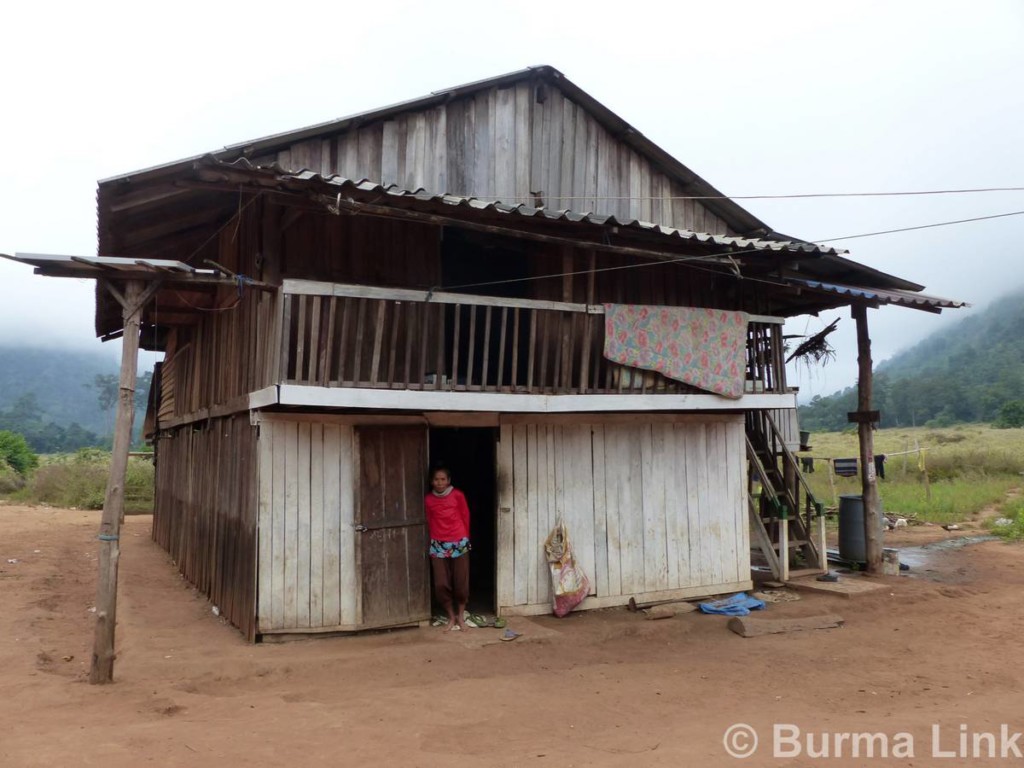
Daw Nan standing outside her house that they built themselves.
Childhood family and village: “I will not move [to childhood village], because there are conflicts”
As for her childhood family, Daw Nan’s parents have passed away at old age due to diseases. Daw Nan’s older sister was living with her until last year, when she passed away. Her brother lives in their village of origin.
I have one brother and two sisters. I am the youngest sister. My brother still lives in Nor K’ Toe and my sister lived with me and died here.
Daw Nan has never been back to her village. She stays in contact with her brother by traveling to the nearby Thai town Mae Tha Wor to use her niece’s phone. She also hears new updates about her home village from her niece who visits different celebrations in the village once every few months. Back in the village, Daw Nan’s brother works as a farmer, but he is struggling with the work load as he is getting older. If she had money she would visit the village, but she does not want to live there.
I will just visit. I will just live here in my village now. If I had money sometimes I would visit my village but I have no money.
Daw Nan says she wants to stay in her current village for the rest of her life.
We just want to stay here, we don’t enjoy staying in other places.
Her husband adds that it is “because there are no places to stay where we are free.”
I will not move [to village of origin], because there are conflicts between the Karen and Burmese.
[/fusion_separator]Relations with local communities and authorities: “They [local Thai people] said, ‘if the Burmese troops come, contact us and we will save you’”
Before we started living here we asked the land owner and then the Thai government [official] came and told us ‘you can live here in peace and you don’t need to run or be afraid of anything.’ We just have a registration paper like if we go to Mae La camp, we have to get a permission paper from the KNU.
Despite the lack of documentation, Daw Nan says the villagers can travel to Mae Tha Wor.
It doesn’t matter [for documents] because the police know all of us.
She has not tried to get any ID for herself, but her husband as well as one of her sons has a Thai ID card. She hopes she will have the money to get a Thai ID also for her daughter who studies in Mae Tha Wor.
I cannot try, but my son who went to Bangkok, he has a Thai ID card and my husband has one too, also my daughter who studies at the Thai school she may get one after she passes grade 6. If we have money we can get it. [My husband] had to spend over 70,000 baht [USD 2,200] in order to get it. To get it, he sold almost all our belongings that we had such as pigs, chickens, cows, and goats. He got it 5 years ago.
Daw Nan thinks that the only differences between the Karen people and Thai/Thai Karen people in the area are the opportunities. On the whole, she seems to feel positive about the way the Thai people and authorities treat them, and says relations between them are good.
Nothing different [between us] but just that they [Thais] have more opportunities. We don’t have a chance to go outside [move freely] or something.
They don’t disturb us because they know us. If they come to my house, we feed them and give them food so they know us very well. The Thai people said, ‘you can live here and if something happens here just contact us and we will help you as well.’ They said, ‘if the Burmese troops come, contact us and we will save you and drive you by the car to a safe place.’
No, we don’t get any support from them, she says when asked if local Thai communities have supported them in any way.
If the villagers have a problem, they go seek help from the KNU across the river, but Daw Nan says these situations are rare. She also says that the KNU leaders in Mu Aye Pu listen to the villagers and their concerns.
[/fusion_separator]Health and education: “There are over 50-60 students”
For health, Daw Nan explains that the villagers travel to the Thai town Mae Tan, about one hour south from the village, when they have a more serious health problem. For smaller health problems villagers go to Mu Aye Pu, but although the clinic has a doctor and trained nurses, medicine is scarce. Daw Nan says she usually goes to Mae Tha Wor because there is not enough medicine in Mu Aye Pu. Daw Nan also described education in the village, supported by Lilian and Jane.
We have grades till grade seven. Lilian and Jane set up this school and they also give some food to the students. Also for the dormitory. There are over 50-60 students. Some are from Mae K’taw Kee, K’tray Tar and other places from Burma. After they finish the school here they continue their school in another place at Ta Kaw Klaw or Pa Now Klen Klaw.
Daw Nan says there is no training in the village, and no other foreigners except for Lilian and Jane support the villagers.
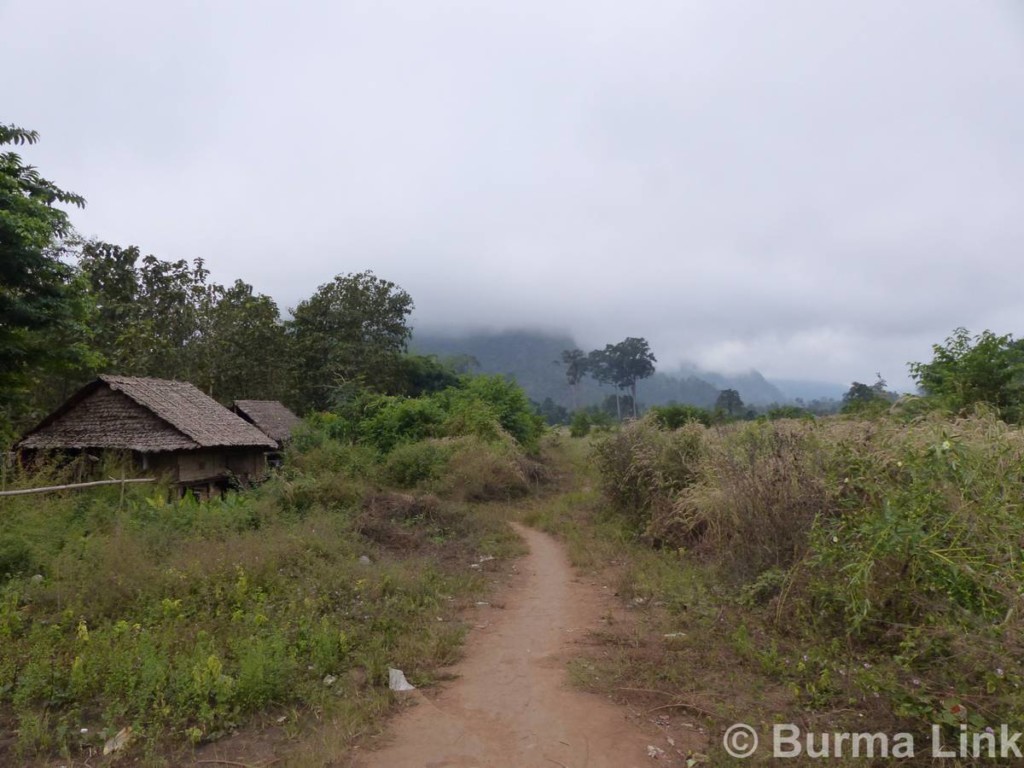
The village is located in a remote area and surrounded by jungle and mountains.
Security and threat of conflict: “I just heard the sound of guns and I was not afraid … I will not run anywhere”
When asked if she has experienced any conflicts or tension since living in Ha Hto Ko, Daw Nan talks about the conflict between the DKBA splinter group and the Burma Army-aligned BGF (Border Guard Force) that took place near Mae Tha Wor between August and October 2016. According to eyewitness reports from Mu Aye Pu, the conflict involved Burma Army aerial attacks and tanks, and killed at least one hundred soldiers. Several sources cited 5,000-6,000 newly displaced Karen civilians.
NOTE: Following Burma Army demands enshrined in the 2008 Constitution, part of the DKBA had become BGF and placed under direct control of the Burma Army. Another faction had refused the BGF demands and joined back with the KNU, later changing their name to Democratic Karen Benevolent Army. After the KNU and DKBA signed the non-inclusive ‘Nationwide’ Ceasefire Agreement (NCA) in October 2015, another faction of the DKBA split away and took back the original name Democratic Karen Buddhist Army. It was this DKBA splinter group that fought against the BGF and the Burma Army, the latter two succeeding in their military efforts to gain control over the Mae Tha Wor-Myaing Gyi Ngu road located nearby the proposed Hatgyi dam, which is strongly opposed by Karen civil society.
The DKBA and BGF were fighting. I don’t know about that, but I just heard the sound of guns and I was not afraid of that. For example, even if they come and fight the people in Mu Aye Pu I will not run anywhere.
No one moved from here.
Daw Nan says that she still feels safe in the village. She also says that some 5-6 families displaced by the conflict moved to their village and are still living there now. She doesn’t know if they will stay or move back to their own place.
[/fusion_separator]Peace process and human rights: “I don’t understand what the KNU is doing now, they are not allowing [soldiers] to fight”
Daw Nan says she and the villagers have never heard of human rights. She also says that she does “not know anything” about the current conflict situation in Burma or the peace process.
I have not been seeking information about that since I have lived here. I never found information about that. I don’t enjoy finding out about that anymore.
Daw Nan doesn’t believe it’s possible to get peace and freedom for the Karen.
I don’t think so. We have wished to have peace and freedom for a long time already but we haven’t got it. I don’t understand what the KNU is doing now, they are not allowing [soldiers] to fight the Burmese [soldiers]. If I was now as I was when I was young I would fight very often. When I was a strong youth I fought with Burmese troops 1, 2 or 3 times per week.
For herself, Daw Nan has no future plans except to stay in Ha Hto Ko.
I can plan nothing I will just live here until I die, but for my sons and daughters they can go and do whatever they want and it is the best thing if they can depend on themselves.
We enjoy living here but we just have a problem with food, if we had enough food it would be better.
More recent updates coming soon!

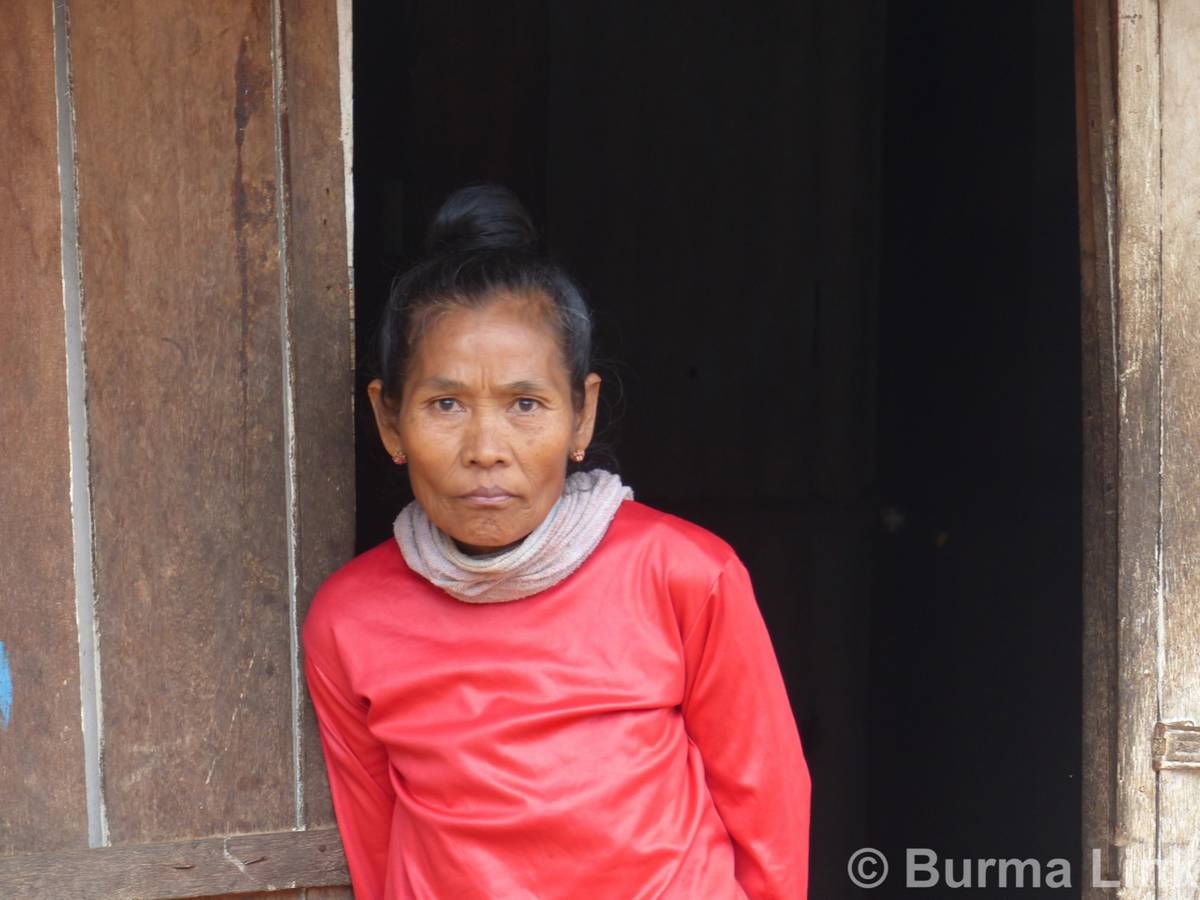
![‘The Burma Army Killed Him [Saw O Moo] – At Least the Government or the Army Should Commit to Not Do This Again’: Paul Sein Twa, Executive Director of KESAN](https://www.burmalink.org/wp-content/uploads/2018/05/Saw-O-Moo-commemoration-Paul-Sein-Twa-speaking-2-150x150.jpg)
